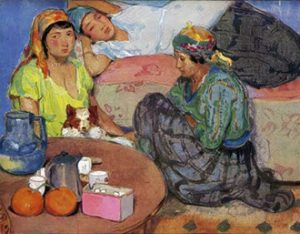
Christine Peltre tells us of the status of “things” in the Orient imagined by nineteenth-centuries contemporaries: objects acquired in bazaars and souks, robes, cloaks, babouche slippers, turbans, headgear, carpets, etc. “Operators of belief, border agents, or reminders of proximity?” Everything would be a way of recalling sites and atmospheres, dazzling sights, even vain and doubtful, dangerous ones. In her photographs, Lala Essaydi, who was born in a harem, reinterprets this Orient made of slaves and chains, Western fantasies, up to and including beauty represented in artworks. For Christine Peltre, the “sentinels of the imaginary” are always on the watch.
Laurence Bertrand Dorléac
> Hartung Bergman Foundation, Seminar August 2015
Something Else
in the Orient
Christian Peltre
“I need something that changes me… I am bored with myself, with my painting, with my studio, with what’s drummed into us over and over again here… It seems to be that I am made for something else.” These words, borrowed from the Orientalist painter Coriolis in the Goncourt brothers’ novel Manette Salomon (1867), may serve to sum up many people’s desires to go on a voyage.
In this “something else,” it could be that things have their role to play—even though, as Nicolas Bouvier later recommended in L’Usage du monde, the “virtue” of a voyage “is to purge life before garnishing it.” And it is indeed from this angle, that of a “cleared” [dégarni] inner path, that travel studies examine the subject. And yet, as has recently been highlighted in part by the 2014 Objects in Painting, Souvenir of Morocco exhibition at the Eugène Delacroix Museum, the presence of things is essential for one to find “something else.”
One of the voyager’s obsessions upon his return involves the fleetingness of recollection: “not to be forgotten” is, for example, a phrase that often preceded Théodore Chassériau’s annotations on his drawings from Algeria in 1846. This fear also returns in the writings of Delacroix, who, in one of his letters from Morocco, feared that he would report “but a shadow” of his stay. A partiality is thus accorded to everything that gives presence and texture to one’s travel rhythm, to the environment of things whose shape and density contrast with the transience of one’s life on the move.
Looking into these presences is particularly pertinent in a century that was, more than others, attentive to objects. Edmond de Goncourt’s words at the threshold of La Maison d’un artiste—a book haunted by the decor of a residence in Auteuil—testify thereto: “In this time when things… are so widely associated, via modern literary description, with the History of Humanity, why would one not write the memoirs of things?”1
Things for Something Else
In Algiers in 1849, “the Moor,” a “great artist of his homeland,”2 offered Edmond as well as Jules the opportunity to go “buy some of those little things every Frenchman is obliged to bring back to his friends and acquaintances.”3 The authors offer an example—oft repeated in narratives of voyages to the Orient—of those abundant objects acquired in bazaars and souks that were increasingly being described as Orientalist ethnography developed, and which acted in pictures as “operators of belief.”4 In texts, things surged forth sometimes in a sort of classical ekphrasis. This reference is explicitly formulated in Aziyadé by Pierre Loti’s correspondent, Plumkett, who thus paid homage to the mimetic incisiveness of his style: “We stand, mouths wide open, before the pictures you drew for us: I am thinking of your three daggers, as I thought of Achilles’ shield, so meticulously sung by Homer!”5
Through their presence thus accentuated, things furnish the voyager’s memory as well as his return, thus yielding a clutter the Goncourt brothers noticed at Gustave Flaubert’s home during their October 1863 visit to Croisset. Indulgently detailing the environment surrounding his work table—“a bric-à brac of things from the Orient”6—they seem to be remembering how Salammbô had previously been judged: “Flaubert sees the Orient, and the ancient Orient, from the angle of Algerian stall shelves.”7
In the figurative representations of Orientalism, human beings themselves are sometimes arranged, like things, on “shelves.” Thus does Louis Dupré’s Voyage à Athènes et à Constantinople (1825) line up decors and models under one and the same heading: “Collections of portraits, views, and costumes…” Laden early on with jewels and finery in the manner of Salammbô, the woman in the Orientalist picture is firmly set within the presence of things. For the writer Rachid Boudjedra, what Delacroix’s Women of Algiers especially reveals is a “cheap junk and knickknack gaze”: “There is an accumulation of objects that represent, each on its own, an enormous cliché or, better, a coarse allusion: the hookah as if it were going to come off the canvas, the brazier, the babouche slippers, the fire poker.”8 This interpretation was perhaps encouraged by an ethnographic reconstitution at the Bardo Museum of Algiers after this picture which was designed as “the exact reconstitution of a domestic space in Algiers.”9
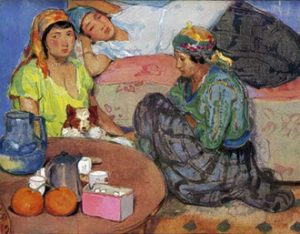
1.“Moorish Women at Home,” watercolor by Jean Bouchaud, L’Illustration, 4551 (May 24, 1930); special issue: L’Algérie 1830-1930.
Reinterpreting in her photographs the poses of models and affirming their “status as persons,” Lalla Essaydi today thus takes a stand against this view that mixes women and decor:
When the Orientalists came to our shores, they discovered a world filed with an exquisite beauty—in architecture, decorative surfaces, fabrics, and women’s clothing. Their art confirmed this beauty. But the beauty in their works is ultimately dangerous, for it leads the viewer to accept as reality, for example, the phantasmatic slave status of Arab women. For me, it was a matter of reappropriating, from the Orientalists, the beauty of my culture and Arab women’s status as persons.10
The Other’s Things
While a voyager’s sketches confirmed in everyday life the importance of things and decors, seeming already to give figurative form to the pictures that would be done upon his return, the mechanism of recollection is nonetheless less simple, as Delacroix remarks: “A host of notes taken on the run seems to me unintelligible. On the other hand, I see clearly in imagination all these things that need not be noted, and which are, perhaps, the sole ones that merit preservation in memory.”11
What are these “things that need not be noted”? Beside the opacity of reality itself, one guesses at a more fluid world of impressions and exchanges, a circulation of images and sensations mixed together that can know no literal transcription. Relinquishing their immobility, their traditional identity as still lives, would not things be, in a sort of hidden fragmentation, like the agents of a border crossing?
However outward it may be, a piece of clothing may offer the opportunity for such transformations. Far from being but a picturesque motif or an ethnographic curiosity, pinned onto a set of illustrative plates that reminds one of a herbarium, it is also, in its suppleness, the promise of a gesture or a look. This is what is reflected in Delacroix’s studies of babouche slippers, seen momentarily abandoned or ready to take another step, as with those worn by the black servant in the picture Women of Algiers.
Certainly, putting on an Oriental costume can be but a theatrical pose, as Théophile Gautier testified to in Constantinople when dreaming of “a very respectable mamamouchi look” and seeing himself “as handsome as Monsieur Jourdain during the ceremony.”12 Yet after the spectacular effect, adopting such clothing can lead to absorption into another life, as Adrien Dauzats recalls when in Cairo he learned to “Mahometize” himself:
I was rather hindered in my person: my brow was weighed down by my turban; the folds of my robe and my coat hindered my gait; my babouche slippers and my feet, still ill accustomed to each other, frequently felt disarticulated. Mohammed walked by our side, marking time in words: Slowly, slowly. Finally, when the French exuberance was calmed a bit, when a bit of slow rhythmic movement allowed us to observe the sway of the body required to give Arabic grace to our look, everything went better.13
This grace helped one to escape for a time from the sad bearing of the West, as Delacroix commented in a much-talked-about phrase: “Grace takes revenge on our science.”14
Beyond one’s aspect, this absorption by things would thus commit us to follow the intuitions of Jean Laude who, in his university course on “Orientalisms” given during the 1975-1976 school year, wondered in the following terms: “… such as it is painted for its exoticism and its obvious picturesqueness, has the Islamic world had an effect, when painters went there to work, on the iconographic level alone? We have Delacroix to prove it: the very nature of this picturesqueness, of this exoticism… also referred one back to other mores, to another mode of living, one whose seductiveness exerted itself in the medium term upon everyday life. One should consider conducting an investigation into women’s make-up in the nineteenth and early twentieth centuries.”15
The Same Thing?
Such empathy could not, however, hide the opposite aim of clothing accessories. One’s voyage can also be lived behind a visor, beneath a neck protector, or under a pith helmet. Gautier left a list that was as humorous as it was varied of the headgear his companions wore on his 1869 voyage to Egypt, which was “farcically eccentric” “in order to preserve from tanning bearded faces that did not seem to require one to go to all that trouble.”16 In the same spirit, Jean-Didier Urbain laughed at the women who braved the Mediterranean in the late nineteenth-century posters of Hugo d’Alesi, mocking “these implements that are to their vacation philosophy what hammer and sickle were to Communism, namely, the hat and the inevitable umbrella.”17
This list of protective things constitutes, too, the panoply of the voyager—which preserves him in his wholeness. For, most often, the voyage bears within itself its own return, and the elsewhere of the Other prepares one only for the rediscovery of the Same. This is what things can say when, in their quiet wakefulness, they set off reminders of proximity.
Among other examples, let us choose the universe of woman, whose seductiveness, for the voyager, owes much to the foreignness of her customs and costumes. Yet the things surrounding her, lavishly described or represented, are also those of her activities—weaving, embroidery, sewing—the familiar spectacle of which certain voyagers enjoyed rediscovering. A nineteenth-century art critic, Léon Lagrange, thus noted, during a voyage to Turkey: “The carpets of Smyrna and Karmania, held in such high esteem all over, are a proof of what the genius of woman can produce. All are woven by female hands.” This offered him the occasion to establish a correspondence between women of the Orient and women of the West, to note the existence of a great universal workroom isolated from more ambitious works, such as “the great architectural designs, statuary, painting in its highest expression,” and to conclude, reassured, “male genius has not to fear female taste.”18
While this area of investigation in part goes beyond that of “things,” we would nevertheless like to finish by looking into the encounter between the voyager and the visual-arts creations of the countries of the Orient. In his novel My Name Is Red, Orhan Pamukushered us into the intimate world of a distance—the one that separates European from Turkish eyes in the representation of the world in the sixteenth century. Has the gap diminished since then? Are the “things” of the foreign visual-arts universe, from the most modest to the most ambitious ones, seen “with other eyes”? In his lovely book Five Cities, the Turkish writer Ahmet Hamdi Tanpinar makes us doubt that. Mentioning the text in which André Gide was inspired by the Green Mosque of Bursa in his Journey to Turkey (1914), Tanpinar expressed his gratitude to him for the sensitivity of his description—“He was the writer who best understood the Green Mosque”—before concluding: “He speaks of it almost as he would speak of the Parthenon.”19
“Operators of belief,” border agents, or reminders of proximity?”
Things are on the watch during a voyage, as sentinels of the imaginary.
Notes
1 Edmond de Goncourt, Préface, La Maison d’un artiste (Dijon: L’Echelle de Jacob, 2003).
2 Jules and Edmond de Goncourt, Alger. Notes au crayon et autres textes (Paris: Magellan, 2011), p. 35.
3 Ibid., p. 37.
4 François Hartog, Le miroir d’Hérodote (Paris: Gallimard, 1980), p. 275.
5 Pierre Loti, Aziyadé (Paris: Calmann-Levy, no date), p. 134.
6 Edmond and Jules de Goncourt, Journal (Paris: Robert Laffont, 1989), vol. 1, p. 1023.
7 Ibid., p. 692.
8 Rachid Boudjedra , “Delacroix: un colonialiste en robe de chambre,” Peindre l’Orient (Paris: Zulma, 1996), p. 26.
9 Elie Lambert, Delacroix et les Femmes d’Alger (Paris: H. Laurens), 1937, p. 5.
10 Benjamin-Constant. Merveilles et mirages de l’orientalisme (exhibition catalog), Toulouse-Montréal, 2014, p. 252.
11 Eugène Delacroix, Journal, vol. 1 (Paris: José Corti, 2009), p. 266.
12 Théophile Gautier, Constantinople (Paris: Bartillat, 2008), p. 162.
13 Alexandre Dumas and Adrien Dauzats, Quinze jours au Sinaï (Leipzig: Velhagon & Klasing), 1901, p. 30.
14 Eugène Delacroix, op. cit., p. 237.
15 Jean Laude, “Peinture pure et/ou avant-garde: Les Orientalismes 1860-1960,” 1975-1976 school-year postgraduate seminar, unpublished typescript, p. 119.
16 Théophile Gautier, Voyage en Egypte (Paris: La Boîte à Documents, 1996), p. 42.
17 Jean-Didier Urbain, Au soleil. Naissance de la Méditerranée estivale (Paris: Payot et Rivages, 2014), p. 127.
18 Léon Lagrange, “Du rang des femmes dans les arts,” Gazette des Beaux Arts, October 1, 1860, p. 35.
19 Ahmet Hamdi Tanpinar, Cinq villes. Istanbul. Bursa. Konya. Erzurum. Ankara, French edition, ed. Paul Dumont (Paris: Publisud-UNESCO, 1995), p. 170. [Translator: We have translated from the French translation here.]
Bibliography
BOUVIER, Nicolas. “L’usage du monde.” Œuvres, Paris: Gallimard, Quarto, 2004.
Clio, 40 (2014): “Femmes, Genre , Histoire. Objets et fabrication du genre.”
DELACROIX, Eugène. Journal. Vol. I. Paris: José Corti, 2009.
PAMUK, Orhan. My Name Is Red. Trans. from the Turkish by Erdag M. Göknar; with an introduction by the author. New York: Alfred A. Knopf, 2010.
PELTRE, Christine. Femmes ottomanes et dames turques. Saint-Pourçain: Bleu autour, 2014.
Souvenirs du Maroc. Les objets dans la peinture. Curator: Dominique de Font-Réaulx. Exhibition catalog. Paris: Musée Eugène Delacroix, 2014.
URBAIN, Jean-Didier. Au soleil. Naissance de la Mediterranée estivale. Paris: Payot, 2014.
Christine Peltre, who holds the teacher agrégation in the Classics, is a professor of the History of Contemporary Art at the University of Strasbourg. Her main works are: Les Orientalistes (Hazan, 1997), Orientalism (Abbeville Press, 1998); Théodore Chassériau (Gallimard, 2001); Les arts de l’Islam. Itinéraire d’une redécouverte (Gallimard, 2006); Dictionnaire culturel de l’orientalisme (Hazan, 2008); Le Voyage de Grèce. Un atelier en Méditerranée (Citadelles & Mazenod, 2011); Eugène Delacroix, La Matière ardente (Nouvelles éditions Scala, 2012); Femmes ottomanes et dames turques (1880-1930) (Bleu autour, 2014).
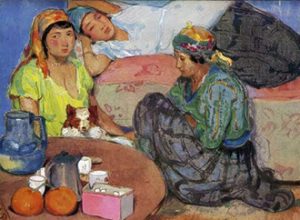
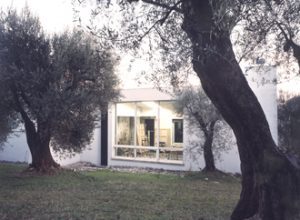
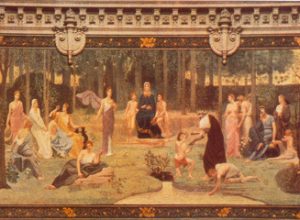

June 12, 2018
“I loved your post. Will read on…”
December 15, 2018
I truly appreciate this article post.Really thank you! Keep writing.
March 7, 2019
Can you inform me what system are you making use of on this site?
April 1, 2019
Thanks for finally talҝing about ># 82 | Something Else in the Orient | Christіan Ρeltre | Arts & Socіeties <Liked it!
October 26, 2019
OzYLHo It as nearly impossible to find educated people on this subject, but you seem like you know what you are talking about! Thanks
November 7, 2019
kqdRF7 Major thanks for the article post.Thanks Again. Really Great.
November 21, 2019
This is very interesting, You are a very skilled blogger.
I have joined your rss feed and look forward to seeking more of your magnificent post.
Also, I’ve shared your website in my social networks!
January 30, 2020
I just want to mention I’m new to blogging and actually savored your blog site. Likely I’m going to bookmark your website . You really come with really good articles. Regards for sharing with us your webpage.
February 25, 2020
It’s truly a nice and useful piece of information. I’m glad that you shared this helpful information with us.
Please keep us up to date like this. Thanks for sharing.